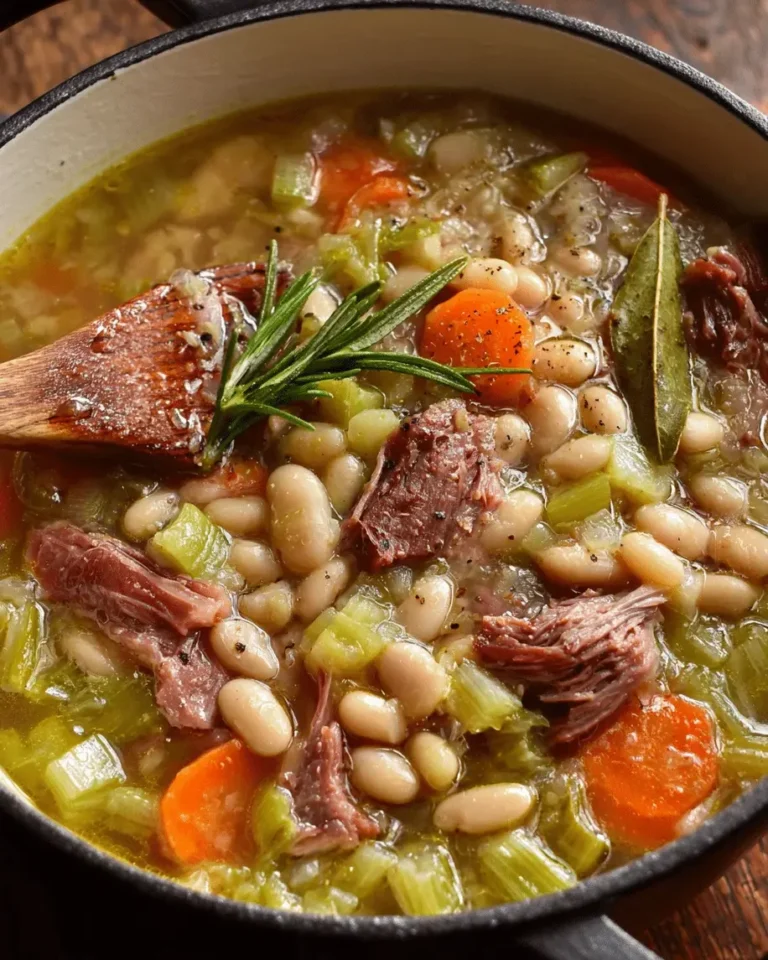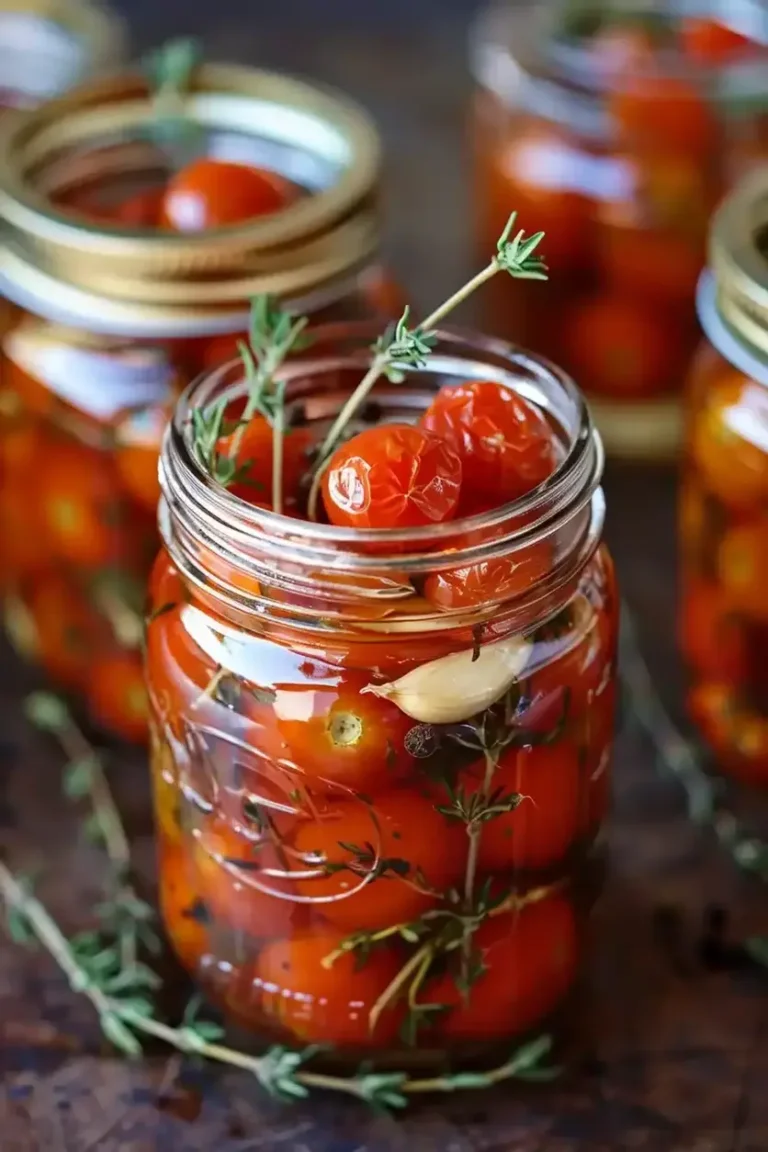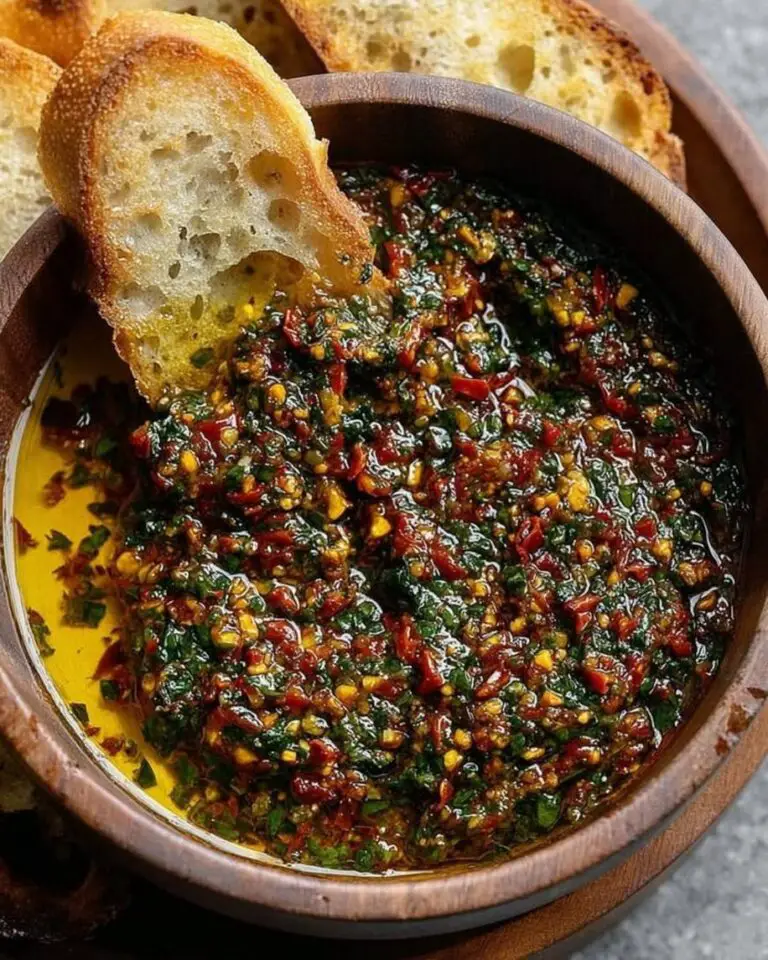Unlock the Secret: Copycat KFC Seasoning Recipe Revealed

Copycat KFC Seasoning Recipe: Enjoy Finger-Licking Goodness at Home
Indulging in the iconic flavors of KFC has never been easier with this Copycat KFC Seasoning Recipe! This simple yet mouthwatering blend brings the famous taste of fried chicken right to your kitchen. With just a handful of spices, you can replicate that heavenly flavor that has made KFC a beloved meal across the globe. Prepare your taste buds for a tantalizing experience as you sprinkle this delightful seasoning on all your favorite dishes!
Imagine crispy, golden chicken seasoned with a blend of spices that dance on your palate. This copycat recipe will not only save you money but will also let you customize the seasoning to suit your preferences. From classic fried chicken to roasted vegetables and even popcorn, this seasoning can elevate any meal. Get ready to impress family and friends as you whip up this delicious seasoning that’s rich in flavor and nostalgic in taste!
Quick Recipe Highlights
- Flavor Profile: A perfect balance of savory, spicy, and slightly sweet notes that keep you coming back for more.
- Texture: Ideal for creating that crispy outer layer when fried or baked, giving your dishes an irresistible crunch.
- Aroma: An enticing blend of herbs and spices that fills your kitchen with a mouthwatering scent while cooking.
- Visual Appeal: This seasoning achieves a beautiful golden-brown color that enhances the presentation of your dishes.
- Skill Level Needed: Perfect for beginners and experienced cooks alike, this recipe requires minimal effort and expertise.
- Special Equipment: A small mixing bowl and a whisk or fork for blending the spices are all you need for this recipe.
Recipe Overview
- Difficulty Level: This Copycat KFC Seasoning is easy to make, requiring no advanced cooking skills, making it accessible for everyone.
- Category: A versatile seasoning that can range from main dish seasoning to simple sprinkle-on toppings for various recipes.
- Cuisine: Influenced by American culinary traditions, bringing a taste reminiscent of southern fried chicken restaurants.
- Cost: Inexpensive to prepare, utilizing standard pantry spices that are affordable and readily available.
- Season: This seasoning can enhance any meal year-round, from summer barbecues to cozy winter dinners.
- Occasion: Perfect for family gatherings, casual weeknight dinners, or when you’re hosting friends for a movie night.
Why You’ll Love This Recipe
First and foremost, the taste and texture appeal of this Copycat KFC Seasoning is hard to beat. With its rich, savory flavors balanced by a hint of spice, it can transform everyday dishes into extraordinary meals. Imagine biting into crispy chicken, perfectly seasoned with this blend, sending your taste buds into a frenzy of satisfaction. You can also adjust the spice level to cater to your preferences, making this seasoning truly versatile.
Another reason to love this recipe is its convenience and ease of preparation. Within just 15 minutes, you can create a large batch of this flavorful seasoning to store and use whenever you need. No complicated steps are involved, making it a go-to option for quick meal preparations during busy weeknights or impromptu gatherings.
In terms of nutritional advantages, this seasoning is free from preservatives and additives that many store-bought options contain. By making your own version, you can tailor the ingredients to be healthier while still enjoying the iconic flavors. This allows you to elevate your meals without sacrificing health, making it a win-win!
This Copycat KFC Seasoning can add a delightful social and entertaining value to your meals. By offering diverse dishes seasoned with this homemade blend, your gatherings will have that extra touch of flavor that guests will rave about. Sharing your culinary creations becomes a shared experience as everyone enjoys the comfort of familiar flavors together.
Finally, the cost-effectiveness and accessibility of this recipe are significant benefits. Most spices can be found in your pantry or at a local grocery store without breaking the bank. You’ll save money by avoiding pricey takeout, and the resulting flavorful meals will have everyone asking for seconds. Enjoy the satisfaction of creating delicious meals that are reminiscent of favorite restaurant dishes right at home.
Historical Background and Cultural Significance
The origin of the KFC seasoning can be traced back to Colonel Harland Sanders, who perfected his blend of 11 herbs and spices during the 1940s. This signature mix became the cornerstone of KFC’s success, contributing significantly to the franchise’s widespread appeal. It symbolized comfort food, bringing families together over meals cherished for generations.
Culturally, KFC has become more than just a fast-food chain; it represents a segment of Southern American cuisine that emphasizes hospitality, home-cooked meals, and flavor. The restaurant’s influence has spread globally, adapting its offerings to suit local tastes while maintaining its core flavors, showcasing the versatility of the original recipes.
Over the years, the KFC recipe has evolved. While the original blend was patented in secrecy, countless attempts have been made by food enthusiasts to recreate this sensational flavor at home. The rise of social media and cooking blogs has enabled a wealth of copycat recipes to emerge, allowing the legacy of Colonel Sanders to thrive continually.
Regional variations of the KFC seasoning are also fascinating. Countries around the world have their unique interpretations, often incorporating local spices and flavors into the mix. This adaptability showcases how comfort food can span borders and be celebrated in diverse culinary traditions while still keeping that familiar essence.
Ingredient Deep Dive
The primary ingredient in this copycat recipe is salt, which acts as the foundation and enhances the flavors of other spices. Historically, salt has played a crucial role in preservation and flavoring throughout various cuisines. Nutritionally, salt can help maintain hydration and balance electrolytes, but it’s essential to consume it in moderation.
When selecting salt for this recipe, consider using kosher or sea salt, as they tend to have a cleaner taste compared to table salt. Store your salt in a cool, dry place to maintain its quality, and feel free to experiment with flavored salts for an extra layer of taste.
Another key ingredient is black pepper. This spice has an enduring history, first cultivated in India and used for its flavor and medicinal properties. Black pepper is rich in piperine, which can aid in digestion and provide antioxidants.
When choosing black pepper, opt for whole peppercorns and grind them fresh for the best flavor. Store whole peppercorns in an airtight container away from light, and replace them every few months for optimal freshness.
Common Mistakes to Avoid
- Using stale spices can significantly reduce flavor impact. Always check the freshness of your spices before making this seasoning.
- Not measuring ingredients accurately could lead to an unbalanced flavor profile. Use measuring spoons for precision.
- Skipping the mixing process might result in uneven distribution of spices. Make sure to whisk or blend thoroughly.
- Over-seasoning dishes can overwhelm the natural flavors of your main ingredients. Start with a small amount and adjust to taste.
- Neglecting to adjust for dietary restrictions can lead to issues. Consider swapping any problematic ingredients if required.
- Assuming this seasoning is only for fried chicken can limit its use. Explore incorporating it into various dishes such as vegetables, marinades, and more.
- Using expired ingredients can ruin the flavor. Always check the dates on your spices before use.
- Not storing the seasoning properly can lead to spoilage. Keep it in a cool, dry place in an airtight container.
Essential Techniques
One essential technique for this Copycat KFC Seasoning is proper blending. Ensuring that all ingredients are mixed well is crucial for achieving that distinct flavor. Using a whisk or fork will help combine herbs and spices evenly. A common pitfall is not mixing long enough, which can lead to concentrated flavors in patches rather than a balanced seasoning.
Another vital technique is managing portion sizes while seasoning. Adding the seasoning gradually allows you to maintain control over the flavor profile of your dish. A common mistake is overdoing it, which can overpower the dish. By tasting as you add, you can achieve the perfect flavor balance.
Pro Tips for Perfect Copycat KFC Seasoning
Start with fresh spices for optimal flavor and results. Stale spices lose potency and can produce a bland seasoning blend.
Consider increasing the quantity of cayenne pepper for a spicier kick if you love heat. Adjusting spice levels is key to personalizing your flavor profile.
Use high-quality ingredients for the best outcome. Organic and non-GMO spices can significantly enhance the taste and nutritional quality of your seasoning.
Mix larger batches and store them in an airtight container. This way, you will always have your homemade seasoning on hand for quick meals.
Experiment with additional flavors, such as garlic or smoked paprika, to create unique variations that suit your taste preferences.
Try finishing your dishes with a sprinkle of the seasoning just before serving for an extra burst of flavor that can elevate the meal.
Integrate this seasoning into marinades for an added depth of flavor in grilled or baked meats. This technique enhances savory notes wonderfully.
Always remember to share your seasoning creations with friends; it’s a great way to spread the joy of home-cooked meals!
Variations and Adaptations
Consider regional variations where you can add local spices to the mix for a unique twist. For example, in the southern United States, adding a hint of mustard powder can amplify the flavor depth and give a distinctive taste.
Seasonal adaptations are also fun; during the fall, incorporating pumpkin spice elements can create a seasonal flavor profile that enhances the taste of roasted vegetables.
For dietary modifications, this seasoning can easily be made gluten-free as all ingredients are naturally gluten-free. Just ensure that you check labels if you use any pre-packaged spices.
Flavor variations allow for creativity! Swapping regular salt for garlic salt can give the seasoning a deeper flavor, perfect for garlic lovers.
Texture modifications can include using a spice grinder to achieve a finer consistency if you prefer that over coarser blends, which add different mouthfeel during meals.
There are also presentation alternatives where you can serve dishes seasoned with this blend on vibrant plates garnished with fresh herbs to make meals visually stunning.
Serving and Presentation Guide
Plating techniques can significantly enhance the visual appeal. Use colorful, contrasting dishes to make the meal pop on the table.
Garnishing ideas such as fresh herbs or lemon wedges can elevate the presentation further, complementing the seasoning beautifully.
Traditional accompaniments may include coleslaw and biscuits, served on the side to create a classic Southern feast.
Modern serving suggestions can feature bowls of seasoned popcorn alongside casual finger foods during social gatherings for a trendy snack presentation.
Temperature considerations matter too; serving fried chicken hot out of the fryer is essential for maintaining that crispy texture.
Portion control tips are helpful; using portioned serving tools can aid in achieving consistent serving sizes for entertaining guests.
Wine and Beverage Pairing
For wine pairings, consider a light Chardonnay or Riesling that complements the richness of fried chicken without overwhelming the palate.
Non-alcoholic alternatives can include sweet tea or lemonade, both of which are traditional pairings that enhance the Southern dining experience.
If you enjoy coffee or tea, consider serving lightly brewed herbal tea to cleanse the palate between bites.
Temperature considerations mean that serving drinks chilled or iced can help balance the savory flavors of the meal beautifully.
When serving these beverages, consider refreshing garnishes such as mint for tea or a slice of lemon for added zest.
Storage and Shelf Life
For storage methods, keep your homemade seasoning in an airtight container to maintain freshness and flavor. Choose glass jars or plastic containers with tight-fitting lids for best results.
Temperature requirements dictate that the seasoning should be stored in a cool, dry place away from direct sunlight to avoid spoilage.
Container recommendations suggest using labeled jars to easily identify your seasonings, making your cooking experience more efficient.
Signs of spoilage include changes in color, loss of aroma, or clumping, indicating it might be time to create a new batch.
When reheating seasoned dishes, gently warm them on the stovetop or in the oven to maintain crispness and flavor integrity.
Freezing guidelines aren’t typically necessary for dry seasonings, but prepared dishes can be frozen while retaining their flavors for later enjoyment.
Make Ahead Strategies
Prepare the seasoning up to a week in advance and store it properly, ensuring your meal prep is smooth sailing.
Storage between steps can be streamlined by keeping each ingredient pre-measured and ready to mix when needed, saving time during cooking.
Quality impact assessment should be made by checking for freshness; incorporating fresh ingredients enhances overall flavor quality.
When assembling meals with this seasoning in mind, remember to prep larger batches for family gatherings or parties, making your life easier.
Reheating guidelines suggest using the seasoning in various recipes to create dishes that feel freshly prepared, adding depth to the flavor.
Incorporate fresh elements, such as herbs, at the end of cooking for a bright flavor contrast to your seasoned dishes, enhancing freshness.
Scaling Instructions
For halving the recipe, simply use half of each spice measurement, ensuring you maintain the same flavor balance.
When doubling or tripling, consider larger containers to mix, as large batches can be more challenging to blend thoroughly.
Equipment adjustments may be necessary; ensure you have mixing tools that can accommodate larger amounts without spilling.
Timing modifications aren’t required for this seasoning, as prep remains the same regardless of amount.
Storage considerations should involve using multiple smaller containers for easier access to smaller amounts when cooking.
Nutritional Deep Dive
The macro breakdown of this seasoning primarily focuses on its sodium content from salt, along with some calories from the spices used, but overall, it’s negligible per serving.
Micronutrient analysis gives insight into the vitamins and minerals from various spices, such as Vitamin K from oregano, which contributes positive health effects.
Health benefits involve promoting better digestion through spices like black pepper, which can enhance nutrient absorption.
Dietary considerations mean those watching their sodium intake should be mindful of how much seasoning they use, adjusting as needed.
Portion analysis indicates that a little goes a long way—understanding serving sizes will help maintain flavor without oversalting.
Weight management tips advise balancing seasoned meals with sides that are lighter and high in fiber for a well-rounded plate.
Dietary Adaptations
This seasoning can easily be made gluten-free as all the ingredients used are naturally gluten-free. Ensure to source gluten-free certified spices for safety.
For a dairy-free option, this seasoning is inherently devoid of any dairy products, making it suitable for those with lactose intolerance.
Vegan diets will also find this recipe appealing as there are no animal-derived ingredients in the seasoning.
Low-carb eaters can incorporate this seasoning without worry; it contains no carbohydrates, fitting perfectly into carb-conscious diets.
With Keto diets in mind, this seasoning is also beneficial as it allows flavor without added sugars or carbs, making meals enjoyable without guilt.
Paleo followers will appreciate the whole food elements present in the spices, adhering to dietary restrictions while enjoying great flavor.
Low-FODMAP adaptations can be achieved by selecting specific herbs and avoiding garlic seasoning if necessary, ensuring digestive comfort.
Other specific diets can still enjoy this seasoning; just be mindful of substitutions that conform to personal dietary needs.
Troubleshooting Guide
For texture issues, if your seasoning feels clumpy, consider sifting the mixture to achieve a finer consistency for even distribution.
Flavor balance concerns can arise if too much salt is used. Counteract this by adding extra herbs or spices to regain harmony.
Temperature problems might occur when warm dishes do not retain the seasoning. Try incorporating it during both preparation stages and finishing touches.
Equipment challenges can include ineffective mixing; use a blender for larger batches if whisking proves too time-consuming.
If ingredient substitutions alter taste too much, experiment slowly with smaller amounts until you find a balance that suits your palette.
Timing concerns are non-existent for prepping this seasoning, but remember to allow flavors to meld overnight if making in advance for richer outcomes.
Recipe Success Stories
Reader feedback consistently expresses delight in replicating the beloved KFC flavor in their own homes. Many have praised the ease of the recipe and the satisfaction of making it from scratch.
Variation successes highlight how users have made the seasoning their own, incorporating unique spices to resonate with their culinary tastes.
Adaptation stories showcase how some readers turned this seasoning into a delightful gift for friends and family, spreading the joy of homemade flavors.
Photography tips shared by the community have inspired many to showcase their delicious dishes on social media, joining the conversation around vibrant counter-cooking.
Frequently Asked Questions
Can this seasoning be used for other recipes? Absolutely! This seasoning works well on fried chicken, roasted vegetables, or even popcorn for a flavorful snack.
How long does homemade seasoning last? When stored properly in an airtight container, this seasoning can last up to six months.
What if I want to make it spicier? You can easily increase the amount of cayenne pepper or add red pepper flakes for extra heat.
Can I use this seasoning on grilled foods? Yes, this seasoning is excellent for enhancing the flavors of grilled meats, adding a smoky note.
Is this recipe gluten-free? Yes, all the spices in this seasoning are naturally gluten-free. Just ensure that your ingredients are certified gluten-free.
How do I store leftover seasoning? Store leftover seasoning in an airtight container in a cool, dark place for maximum freshness.
Can I make this seasoning with fresh herbs? While fresh herbs can be used, this recipe is designed for dried spices for best flavor concentration.
What type of salt is best for this seasoning? Kosher salt or sea salt is preferred, as they have a milder flavor compared to table salt.
Can I scale this recipe up or down easily? Yes, this recipe is very forgiving and can be easily adjusted to suit your needs.
Is this seasoning suitable for kids? Yes, this seasoning can be adjusted for a milder flavor to cater to the taste preferences of children.
Additional Resources
Explore related recipes that use this seasoning, such as homemade fried chicken, crispy roasted potatoes, or savory popcorn. These can provide fun ways to incorporate the seasoning into your meals.
Technique guides on frying and seasoning other foods can improve your culinary skills while maximizing the flavor of your dishes.
Ingredient information for each herb and spice used can help you understand their roles in flavoring and health benefits.
Equipment recommendations for frying pans and other kitchen tools can help ensure you achieve the best results when using this homemade seasoning.
Seasonal variations, such as incorporating grilled elements in summer or roasted vegetables in fall, can keep your menu exciting and fresh.
Join the Conversation
Share your experiences on social media, showcasing your culinary creations! Photos and stories can inspire others to try their hand at this Copycat KFC Seasoning recipe.
Photography tips encourage you to capture those beautiful plates, making your dishes visually appealing and engaging on platforms like Instagram and Pinterest.
Recipe reviews can guide fellow cooks on their journey, building a community that enjoys sharing and perfecting the art of cooking together.
Engaging with the community by addressing recipe variations will help foster creativity, allowing everyone to find their unique twist on the flavors they love.
The Recipe
Copycat KFC Seasoning
Serves: Makes about 1 cup seasoning
Prep Time: 15 mins
Cook Time: 0 mins
Total Time: 15 mins
Kitchen Equipment Needed
- Mixing bowl
- Whisk or fork
- Airtight storage container
Ingredients
- 1 cup all-purpose flour
- 1 tablespoon salt
- 1 tablespoon black pepper
- 1 tablespoon paprika
- 1 tablespoon garlic powder
- 1 tablespoon onion powder
- 2 teaspoons dried thyme
- 2 teaspoons dried basil
- 1 teaspoon celery salt
- 1 teaspoon ground mustard
- 1/2 teaspoon cayenne pepper (adjust for spice preference)
Directions
- In a mixing bowl, combine all the ingredients thoroughly until they are well blended.
- Store the seasoning in an airtight container away from sunlight.
- Use it to season chicken, vegetables, or as a flavor booster for any dish you desire!
Recipe Notes
- Feel free to adjust the spice level according to your personal taste.
- This seasoning can also be used as a wonderful rub for grilled meats.
- Experiment with different herbs to create your personalized blend!






